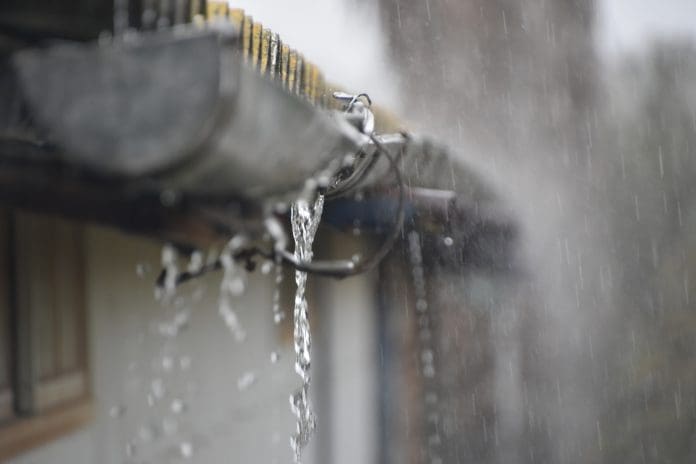Premier Guarantee explores the necessity of incorporating breathable membranes in projects that use sheathing boards as backing walls
Breathable membranes are essential to ensuring the longevity and durability of building structures.
In recent years, external wall build-ups incorporating a sheathing board have become an important solution for construction projects.
However, it is important to be aware of the potential risks associated with water ingress and inadequate sealing between the boards.
Sheathing board joints are often vulnerable to movement
While some weatherboard products have water-resistant properties, the joints and interfaces with the surrounding structure are vulnerable.
Even when installed to a high standard, the ability of these jointing methods to withstand the long-term effects of building movement and interfaces is an issue.
All building materials are subject to movement during use. This is due to a variety of factors, including temperature changes, moisture content, and deformation or variation under load of either the material itself or the adjacent materials.
Sheathing boards, being rigid panel elements with numerous joints and fixings, may not maintain a continuous, robust, and durable degree of water tightness over the long term.
In contrast, breathable membranes can be easily dressed, wrapped, and sealed around interfaces and penetrations, providing a reliable solution for maintaining water tightness whilst absorbing movement without loss of performance.
How do breathable membranes work?
Breathable membranes allow water vapour to escape from inside a building while preventing liquid water from penetrating the building envelope. They are typically made of a synthetic material that has a high vapour permeability but a low water permeability.
Breathable membranes work by allowing water vapour to pass through them by diffusion. Diffusion is the process by which molecules of a substance move from an area of high concentration to an area of low concentration.
The pores in breathable membranes are small enough to allow water vapour molecules to pass through, but they are too small for liquid water molecules to pass through.
This means that water vapour can pass through the membrane easily, but liquid water cannot and causes wicking, where water drains through the membrane via gravity.
Wicking is the process by which a liquid is drawn through a porous material by capillary action, away from the substrate and greatly reduces the likelihood of water ingress into the building.
Sheathing board solutions may not reach the same levels of performance as breathable membranes
Breather membranes should be tested to achieve a minimum W2 to BS EN 13859-2 with no water leakage during testing. Open jointed rainscreen cladding systems should achieve a W1 Classification.
In contrast, sheathing board solutions may not achieve these levels of performance, and their joints have not undergone the same level of testing and classification.
Additional joints can create additional weak points
By incorporating sheathing boards, more joints are introduced into the façade, creating potential weak points. There are various methods for joining the boards, each with its own set of considerations in terms of durability and the ability to accommodate building movement.
Breathable membranes offer a consistent and reliable solution for mitigating the risks associated with additional joints and workmanship.
Breathable membranes are an added line of defence against water ingress
Even sealed facades, such as brickwork, may still allow a significant amount of water into the cavity, especially in cases of wind-driven rain and when the building height increases.
Breathable membranes act as the final line of defence, providing the required protection against water ingress.
What are the environmental benefits to using breathable membranes?
From an environmental perspective, a building that lasts longer due to measures taken to protect the building envelope will have a lower embodied carbon than a building with a shorter lifespan.
Embodied carbon is spread out over a longer period of time, resulting in lower average annual emissions. This makes them more sustainable and environmentally friendly in the long run.
Breathable membranes are a worthy investment for your building
We fully acknowledge the potential impact that these requirements may have on our clients in the short-term build phase.
However, our assessments are based on expert consultation, and experience which has led to the conclusion that there are currently no alternatives to the provision of breathable membranes in conjunction with sheathing boards to meet the minimum requirements of our technical manual and through the duration of the occupation of the building.
In addition to the requirement for breathable membranes, we emphasise the importance of adhering to other quality and installation standards, such as using sheathing boards with suitable quality and supporting BBA certificates.
Proper installation techniques, including sealants, fixing centres, and edge dimensions as identified in the BBA, are crucial.
The Steel Framing Systems (SFS) design must accommodate the sheathing board installation and fixing pattern based on the calculation to demonstrate the board’s ability to withstand project live loads. All other interface details should be considered with the sheathing board as the final line of defence in mind.
To ensure successful implementation, we encourage early provision of design information, allowing ample time for review and comment. This is particularly important in light of the upcoming introduction of Gateway 2 and Gateway 3 by October 2023, which will act as stop/go points in relevant buildings.
Early acceptance of proposals will help prevent potential disruptions and ensure a smooth construction process.
You can learn more about all requirements relating to the installation of breathable membranes, in Premier Guarantee Technical Manual v15.

















